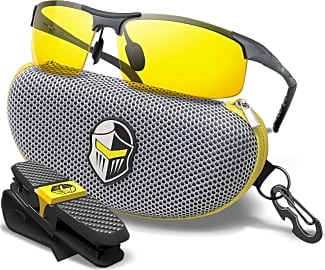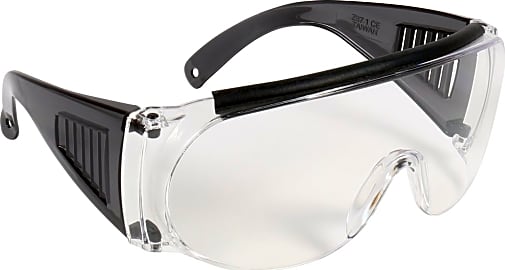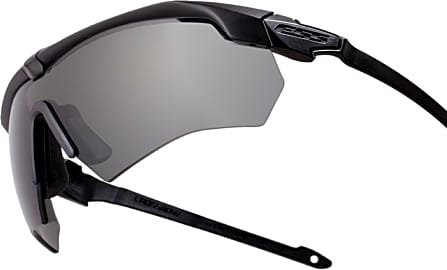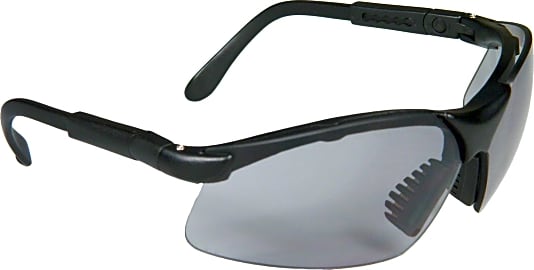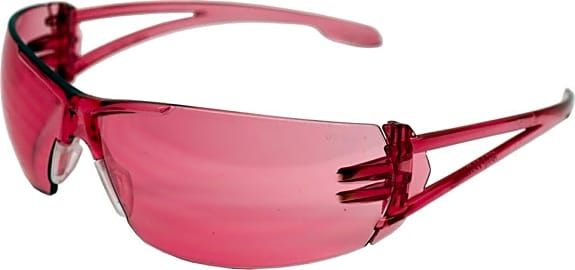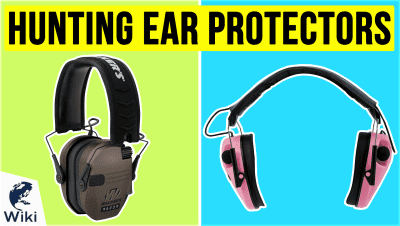The 10 Best Shooting Glasses

This wiki has been updated 39 times since it was first published in October of 2015. When you're using a weapon at the range or in the field, there are countless dangers, and protecting your eyes is just one crucial measure to take. You can be injured by ejected casings, ricocheted bird shot, tree branches, or even smoke from cheap ammo. But if you have a pair of these shooting glasses on, you'll have less to worry about. Tinted versions can also help to reduce glare. When users buy our independently chosen editorial recommendations, we may earn commissions to help fund the Wiki.
Editor's Notes
June 26, 2020:
Removed the Milcraft Shatterproof, the Smith Optics Elite Aegis Arc, and the Blupond Sports in favor of the Blupond Knight Visor, the Venture Gear Tactical Semtex 2.0, and the Smith Optics Elite Aegis.
Shooting glasses come in two general safety classes: civilian and military. Glasses meeting neither of these standards are not genuine shooting glasses and should not be used for activities where impacts are a concern. At times it can be difficult to determine whether a pair of glasses meets a particular safety standard but most manufacturers include either a marking on the glasses themselves or information in their product descriptions. For regular civilian safety glasses such as the Allen Over 2169, the markings will usually be a 'Z87+' (the name of the standard where protection requirements are specified) or the manufacturer will note that they meet ANSI requirements.
Most of the models we included are rated to military standards (MIL-PRF-31013/MIL-PRF 32432) which involve passing rigorous tests including being shot at with .15 and .22 caliber rounds at point blank range. Other tests involve their ability to protect from things like non-ionizing radiation (most often UV light), and fine dust particles. The Howard Leight Genesis and the Venture Gear Tactical Semtex 2.0 meet these high military standards and can be identified via 'Vo' or 'APEL' markings.
Using firearms is extremely dangerous and should only be done by individuals with proper licensing where required and trained in basic firearms safety including gun clearing, muzzle control, finger discipline, and others. Remember to always protect your hearing with earmuffs or earplugs.
Safety First: Choosing Shooting Glasses
Wearing a good pair if shooting glasses is simply imperative for protecting your eyes when you or anyone near you is using a firearm.
Whether you are sighting in your rifle at a shooting range, hunting in the deep woods, or using an air rifle to take shots at cans stacked on a fence on your own large property, unless you are wearing shooting glasses, you are doing it all wrong. Wearing a good pair if shooting glasses is simply imperative for protecting your eyes when you or anyone near you is using a firearm. Shooting glasses can keep you safe from ricochet shots, debris thrown up by a bullet's impact, and from the flame, dust, and burning powder released as each shot goes off.
Good shooting glasses are rated to resist shattering when struck by flying debris and even by a ballistic object, such as a bullet, arrow, or pellet, though likely not in the event of a direct hit. Proper shooting safety measures are still important even when you're wearing safety gear such as glasses so you can minimize the chance of this ever happening. As for choosing proper shooting glasses for your needs, that depends on a few factors.
First, consider your own standard eyewear products and the associated vision correction needs. If you wear contact lenses or if you have naturally good eyesight, then you have wide latitude when it comes to picking the right shooting glasses. If you wear glasses over which your shooting frames must fit, then make sure to only consider options that can accommodate this need. Many pairs of shooting glasses can fit over prescription lenses and offer protection to on their sides that few regular pairs of glasses can offer. Or, in other words, wearing glasses is not the same as wearing shooting glasses; you need to slip a pair over your regular everyday frames.
Next consider the conditions in which you will do most of your shooting. Many shooting glasses have lenses that are yellow or pale orange in color. These shades help to reduce the distortion caused by haze and to accentuate the orange color used on many targets and worn by many hunters. Such colored lenses can also help increase the clarity of contrast a shooter sees in lower light conditions, making for safer shooting at dusk or dawn.
Ideally, though, you can select one of the fine pairs of shooting glasses with lenses that can be easily swapped out as needed. Many shooting glasses come with several different lenses, each of a different shade (or with clear lenses) that will suit at different times of day and locations.
Note that most shooting glasses are highly scratch resistant, which is an important feature, as scratched lenses will make your aim less accurate and less safe. You can usually take this design element for granted, but go ahead and confirm it prior to making a purchase.
Tips For Safe Shooting
The best way to stay safe when at a gun range or when out hunting is to keep your firearm unloaded, save for when you are about to be actually shooting. Make sure you know your firearm well before you ever load it, too; achieve an intimate familiarity with the safety, the bolt or other cocking mechanism, the trigger's pull strength, and so forth. And be absolutely sure you only use ammunition that you're sure is appropriate for the gun.
For hunters, establish fields of fire and no-go areas which will b kept clear of people at all times.
Next, know your surroundings well. For hunters, establish fields of fire and no-go areas which will b kept clear of people at all times. At the firing range, make sure you are using an appropriate type of weapon for the location -- some ranges have different areas for pistols as from long guns, for example, while others might have specific bans on certain types of firearm.
Contrary to conventional wisdom, the safest direction for a firearm to be pointed when it is not aimed downrange is not always at the ground. If you are at a shooting range (or anywhere else) with a so-called hard deck, which is to say flooring made of concrete or asphalt, then gun barrels should actually be aimed upward when not directed toward the firing line.
This helps to prevent potentially injurious or even fatal ricochet shots that are accidentally fired downward against a hard surface. If your range has a floor made of packed dirt or gravel, then by all means aim down. The same is true for hunters or marksmen out in the woods or the fields. And when you are done shooting, unload your firearms of any additional ammunition, clean them thoroughly, and then store them away in a locked gun safe.
Other Gear To Get For Safe Shooting
Safe shooting starts with proper knowledge of the firearms you're using, the location in which you will be firing, and by protecting your eyes with shooting glasses. But there is much more involved in responsible, safe operation of a potentially deadly weapon. And the safer you are when using a rifle, pistol, or shotgun, the safer all those potentially in range of the weapon will be as well.
And the safer you are when using a rifle, pistol, or shotgun, the safer all those potentially in range of the weapon will be as well.
It's critical that you protect your ears when you are firing a gun. The report from a hand gun can crackle at more than 175 decibels, which is more than enough noise to cause instant hearing damage. Even a small bore rifle surpasses the 140 decibel level, which is often considered a threshold for acute damage to the hearing; with regular, unprotected exposure to gunshots, you can be certain of chronic, likely permanent hearing loss. Wearing a good set of earplugs or safety earmuffs is not optional when it comes to using firearms.
Whether to resist the numbing effects of cold weather or to help you absorb some of the recoil of each shot, shooting gloves are a great tool that many shooters swear by. Look for gloves that fit well without restricting movement but without any loose fabric that could reduce your control on the firearm.
Finally, make sure the targets at which you are shooting are safe given the circumstances. Heavy duty steel targets might be fine for use with powerful rifle rounds or shotgun slugs that can easily knock them out of the way and fly on, for example, but the same target may send a pistol bullet bouncing wildly astray. Consider instead a "self healing" target made out of ballistic rubber than can absorb a bullet or else let it pass through with minimal directional change.




